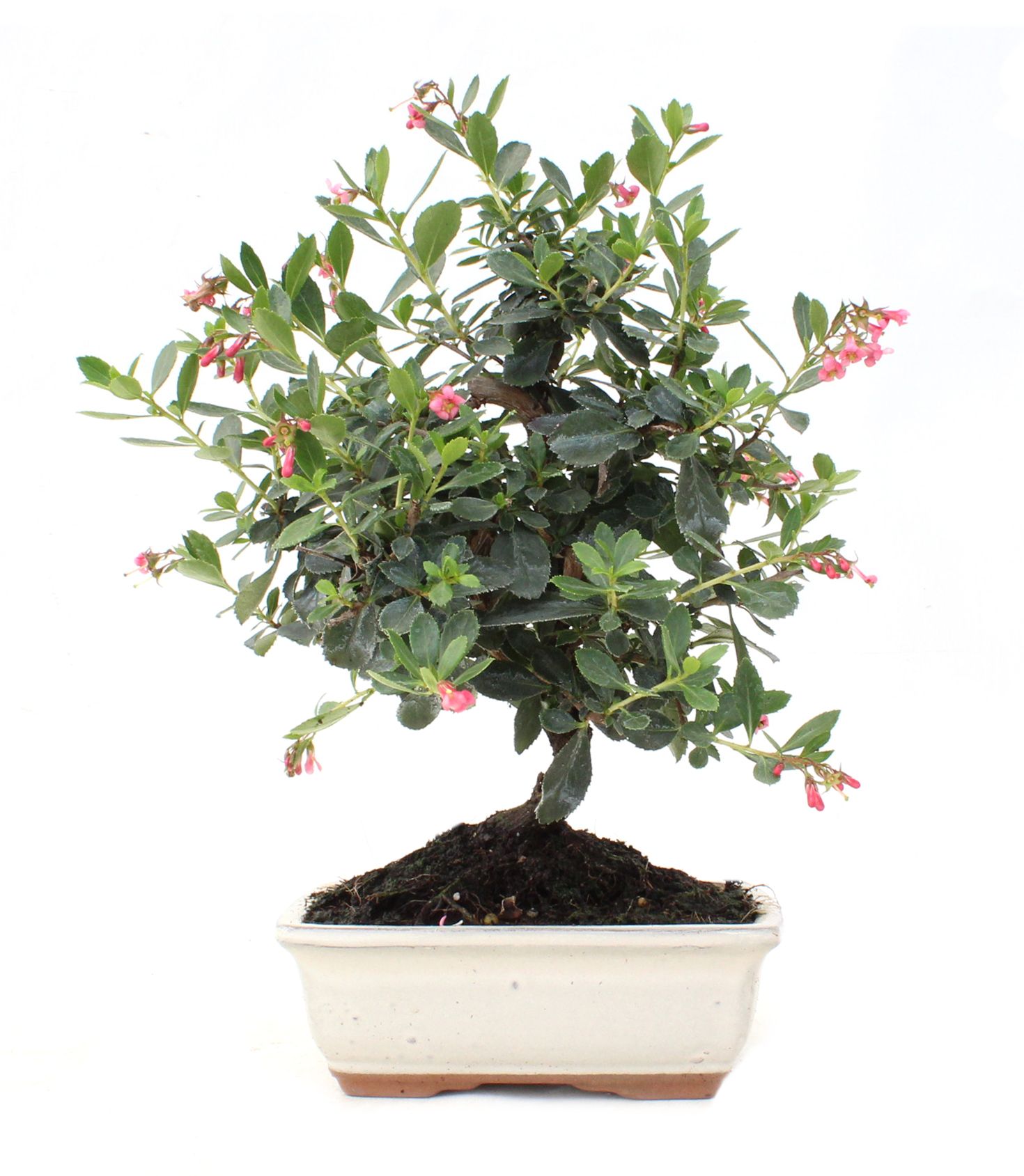Characteristics
Evergreen shrubs up to 2 meters high, with an attractive pink bloom. Simple, dark green leaves with dentate margins. Bell-shaped flowers, usually pink, although they can also be white or fuchsia. These are very fragrant.
Location
They should be placed outside, in full sun or semi-shade in very hot climates. It likes relatively humid environments. In winter it has to be protected from intense cold.
Watering
It doesn’t like excess water at all. It is necessary to let the surface layer of the substrate dry slightly between each watering. They prefer light and airy soils. In winter water thinly.
Fertilization
From spring to mid-autumn with organic fertilizer or liquid NUTRIBONSAI from Mistral Bonsai. The fertilization must be interrupted during extremely hot summer periods.
Re-potting
Caution should be extreme since their roots are quite delicate. Transplant has to be done every three or four years, in early spring.
Substrate
A mixture of 6 parts of Akadama, with 4 parts of volcanic gravel can be used; otherwise Mistral Bonsai TERRABONSAI can also be used.
After transplanting it is convenient to water with a solution of VITABONSAI from Mistral Bonsai, to accelerate the recovery of the tree.
Pruning and pinching
Pruning
It is advisable to prune after flowering to compact its crown.
Pinching
Throughout the growing season we can perform light pinching to get a denser crown.
Wiring
Wiring in this species is difficult since its branches are quite brittle. Take precautions and try to form the crown based on branch selection.
Curiosities
The beauty of this shrub is the great duration of its flowering, plus it is very re-sistant to droughts.

